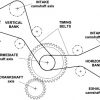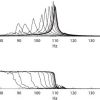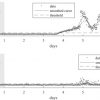Source identification and separation
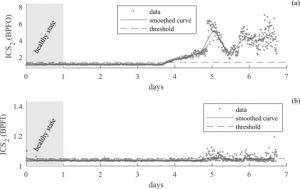 The identification of impulsive faults is of major importance in the diagnosis of rotating machines, especially for gears and bearings, which usually are the most critical components in many mechanical systems. The identification of incipient faults can be difficult, particularly in the early stage, since the impulsive pattern due the fault occurrence is often masked by background noise and other interferences. The situation is further worsen by the spreading effect of the unknown transmission path.
The identification of impulsive faults is of major importance in the diagnosis of rotating machines, especially for gears and bearings, which usually are the most critical components in many mechanical systems. The identification of incipient faults can be difficult, particularly in the early stage, since the impulsive pattern due the fault occurrence is often masked by background noise and other interferences. The situation is further worsen by the spreading effect of the unknown transmission path.
Blind deconvolution algorithms applied to mechanical systems have proven to be effective tools for fault identification, being able to extract excitation sources from noisy observations only. However, their potentialities have not been fully investigated yet, since the methodology is now mature exclusively for stationary operational conditions and linear time-invariant system.
Within this framework, the research team concentrates on the improvement of the existing methods through their coupling with Cyclostationarity concepts and high-order statistics, with the final purpose to increase the efficiency of such techniques by driving the deconvolution process conveniently. Part of the research activity is also dedicated to the implementation of the novel methods in real environments through the definition of automated algorithms.
Cyclostationarity-based diagnostics
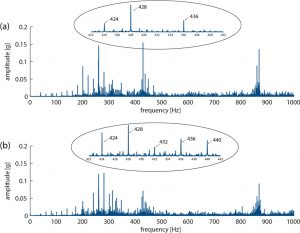 Condition monitoring and fault detection of complex rotating machines such as Internal Combustion engines and their subcomponents, in particular bearings and gears, has always played a key role in both academy and industry. The application of Cyclostationarity concepts on modeling rotating machine signals, which embodies a particular class in the realm of non-stationary stochastic processes, has started almost 20 years ago and nowadays represents the state-of-the-art in bearing and gear monitoring.
Condition monitoring and fault detection of complex rotating machines such as Internal Combustion engines and their subcomponents, in particular bearings and gears, has always played a key role in both academy and industry. The application of Cyclostationarity concepts on modeling rotating machine signals, which embodies a particular class in the realm of non-stationary stochastic processes, has started almost 20 years ago and nowadays represents the state-of-the-art in bearing and gear monitoring.
Diagnostics becomes more complex when bearings and gears are coupled together as in gearboxes and, among them, the class of planetary geartrains is probably the most challenging one, since the vibration signature of each component is masked by the mutual interaction between themselves.
In this context, the research activity is focused on the definition of advanced cyclostationary techniques and indicators for the accurate monitoring of the several components constituting the planetary gear set. The investigation is also oriented to the peculiar case of bevel gears, which is pursued by improving well-established methods with the help of machine learning strategies.
Concurrently, the research team is involved in the analytical characterization and time-discrete reproduction of vibration signals produced by complex geartrains, with the purpose to define standard procedure for the validation of novel diagnostic techniques.
Research Activities

